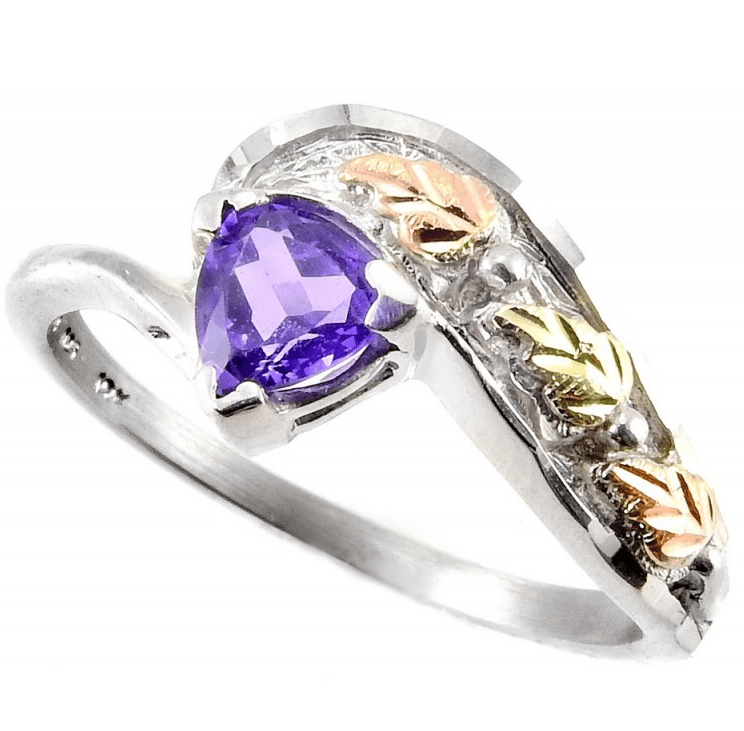Mt Rushmore Amethyst, which is renowned for its famous granite sculptures of the four American presidents George Washington, Thomas Jefferson, Theodore Roosevelt, and Abraham Lincoln, is situated in the Black Hills of South Dakota. But beneath the magnificent surface is a lesser-known gem: amethyst. In addition to being a geological marvel, this gorgeous purple quartz has significant historical and cultural value. This piece explores the history of Mt Rushmore amethyst, its geological characteristics, and its effects on the local economy and community.
Table of Contents
Geological Formation
Amethyst is a purple-colored quartz variant that is caused by natural radiation and iron impurities. This stunning crystal forms mostly in hydrothermal veins found in igneous rocks. Volcanic activity has shaped the Black Hills’ geological past and produced a special climate that is conducive to crystal development. After magma cooled over millions of years to form granite, the rock began to contain amethyst crystals when it came into contact with hydrothermal fluids. There are many amethyst resources in the Black Hills, and one of the best places to find this beautiful mineral is above Mt Rushmore Amethyst. The area’s distinct geological features, such as temperature swings and rivers rich in minerals, influence the size and quality of the amethyst that may be discovered here. As a result, Mt Rushmore is both a geological marvel and a national monument.
Cultural and Historical Significance
Beyond its visual attractiveness, Mt Rushmore Amethyst holds significance. This stunning stone has been valued for millennia in many different cultures. While the Greeks connected amethyst with Bacchus, the god of wine, and thought it might guard against intoxication, the Egyptians thought the stone had protective qualities. Amethyst has long been recognized as a stone of equilibrium, serenity, and clarity. Native American cultures, especially the Lakota Sioux, place great cultural significance on amethyst in the context of the Black Hills. The stones, which stand for beauty and harmony with nature, are frequently employed in customary ceremonies and crafts. The need of protecting these natural treasures for future generations is furthered by the local tribes’ connection to the land and its resources.
Economic Impact
Amethyst’s presence in the Mt Rushmore region has benefited the local economy in a number of ways. The area’s mining industry has prospered, generating employment and promoting economic expansion. Rock hounds and mineral collectors go from all over the nation to mine for amethyst, anxious to find their own pieces of this precious natural resource. The demand for amethyst jewelry, crystals, and other mementos is satisfied by neighborhood stores and markets, which increases the mining sector’s financial advantages. Aside from mining, amethyst’s attractiveness has made it a sought-after resource for crafts and artwork. Amethyst is a common material used by regional artists to create one-of-a-kind creations that accentuate the Black Hills’ natural beauty. This enhances the cultural diversity of the neighborhood by supporting local talent and upholding the history of handcrafted art.
Preservation Efforts
Responsible mining methods and preservation initiatives are becoming more and more important as interest in Mt Rushmore amethyst develops. Calls for sustainable mining techniques that reduce their negative effects on the surrounding ecosystem have arisen from environmental concerns about mining activities. Authorities from local governments and organizations are making efforts to guarantee that mining operations follow the rules that safeguard the region’s natural resources as well as its cultural legacy. Education campaigns to increase public knowledge of the value of amethyst and its geological and cultural significance are another aspect of preservation efforts. Local communities can contribute to making sure that Mt Rushmore amethyst is valued for many years to come by encouraging a deeper awareness for these natural beauties.
Conclusion
More than just a stunning crystal, Mt Rushmore amethyst represents the area’s deep geological past, rich cultural legacy, and thriving economy. The attraction of amethyst may entice visitors as they rush to this historic place to observe the towering presidential faces. The Black Hills’ distinctive story, which emphasizes the value of protecting such assets, is created by the convergence of nature, culture, and the economy. We respect the Black Hills’ natural beauty and the legends enshrined in their stones by commemorating Mt Rushmore amethyst, which serves as a constant reminder of the necessity of maintaining balance between human activity and the environment.
